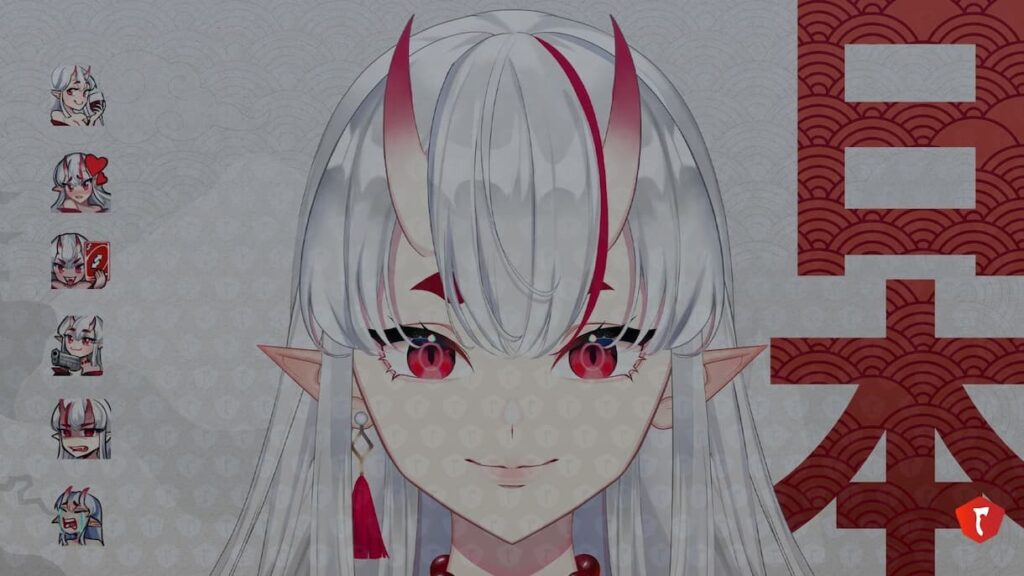VTubers come in many forms; in fact, it’s one of the many reasons a growing number of streamers are trying their hand at this emerging streaming style. The wide array of VTuber models and VTuber avatars opens up new routes for role-playing online, creating virtual communities of extraordinary characters. These range from aspiring idols putting on concerts to supernatural demons and spirits who choose to play games in their free time.
Cover Image Credit: Stream Skins
With so many options, it begs the question: What VTuber models find the most success on live streaming? While we previously provided an overview of popular VTubers, in this article we’re honing in on the demographics of the top VTubers to see what their audiences tend to gravitate towards. These VTuber model topics include:
Where Do Top VTubers Find Their Audience?
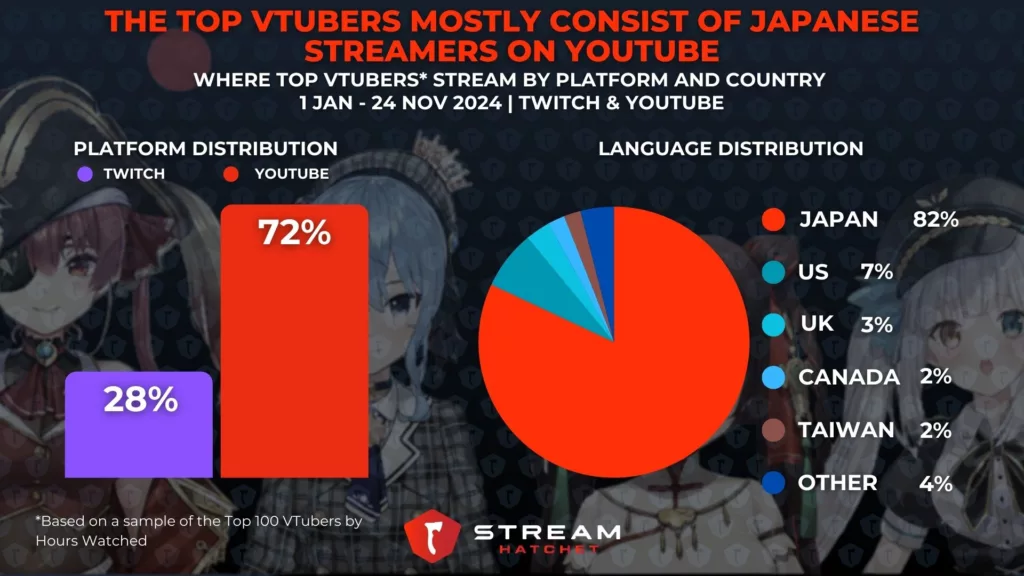
VTuber culture emerged in Japan as an offshoot of idol culture, with many VTubers retaining that legacy through their 3D virtual concerts and dependency on agencies for management (like Hololive and NIJISANJI). It’s no surprise that of the top 100 VTubers by hours watched over the past two years, 82% call Japan their home. Other Asian countries such as China, Taiwan, South Korea, and Indonesia have fed off this hype as well, with local VTubers breaking out in their native language. But the United States is by far the most promising new country for VTuber growth, already featuring 7 of the top 100 streamers. No doubt this is helped by the immense popularity of live streaming in general in the U.S.
Mostly due to this regional split, the platform distribution of top VTubers is also skewed. Among the same group of 100 VTubers, 72% of them use YouTube Gaming as their primary live-streaming platform. Japanese streamers find YouTube better suited to their needs for a couple of reasons. Firstly, YouTube also hosts pre-recorded content which is perfect for the more polished videos VTubers regularly produce. Secondly, YouTube has a lot in common with Japanese video-hosting site NicoNico, which has been popular since its inception in 2006. There are still over a quarter of top VTubers who stream on Twitch though, reflecting the artform’s migration onto Amazon’s platform. Other platforms still remain too niche to feature among the top 100 VTubers, but Asian live-streaming platforms like SOOP and Bigo Live are particularly friendly to VTubers.
What Models Are Top VTubers Using?
With so much possible variety among VTuber models, it’s surprising to see similar kinds of VTubers popping up over and over again. Across the top 100 VTubers, most of them tend to be the stereotypical young, female anime girl. But there is a lot of variation both within that group and outside of it – more than many onlookers might think. Note that the following categorizations are based on presentation only, not based on a character’s specific lore (I.e. certain VTubers may be many hundreds of years old in their backstory or on VTuber wikis, but present as being much younger in human form).
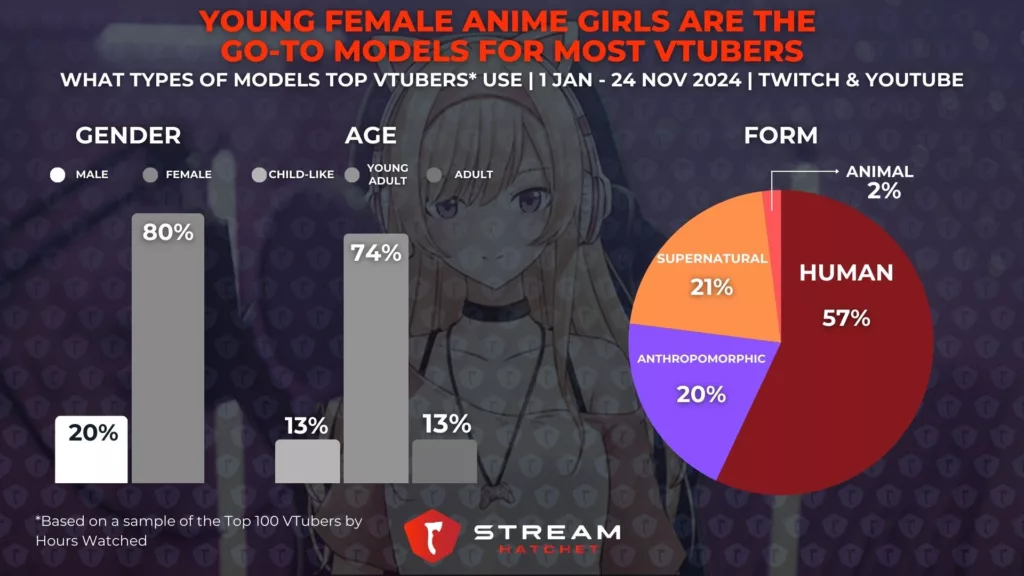
Looking first at gender, an overwhelming 80% of all VTubers are female in appearance. VTuber agency Hololive reports that 82% of its audience is men, which matches with the performer/fan relationship seen in idol culture. In saying that, rival agency NIJISANJI has seen significant success with male VTubers such as Kuzuha and Lauren Iroas, both of whom stream on Twitch. Male and female VTubers tend to slot into very specific roles, with male VTubers being princes, knights, hosts, or CEOs, while female VTubers tend to be idols, maids, and goth girls. Of course, that’s just among human VTubers… more on that below.
Age-wise, we’ve categorized VTubers into three separate categories: Young Adult (anywhere from 16 – 25), Child-like (younger than 16), and Adult (older than 25). Using this definition, the bulk of the top 100 VTubers (74%) tend to fall into this Young Adult range. Again, this preference might echo idol culture, but it could also represent the age range that younger fans are looking to for guidance. Child-like VTubers in this group are always kawaii (cute) first and foremost, while Adult VTubers come across as dependable, learned, and sometimes risqué. As a result, age itself is often enough of a gimmick to stand out from the pack (note the lack of any elderly VTubers in this top 100 group).
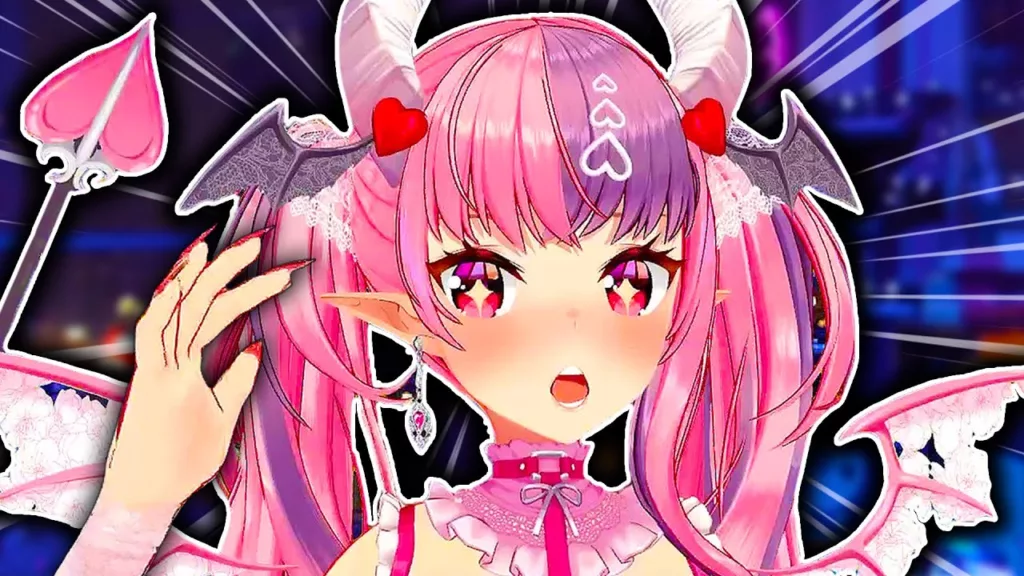
Although simple human forms account for the majority of VTubers (57%), their virtual form allows for further experimentation. The two most common VTuber forms can roughly be grouped as “Anthropomorphic” VTubers (20%) and “Supernatural” VTubers (21%). Anthropomorphic VTuber models feature some element of an animal in their design, such as cat ears, ram horns, or bird wings. Two of the most popular VTubers ever fall into this category, those being Usada Pekora and Gawr Gura. Supernatural VTubers include demons, spirits, vampires, and wizards – anything magical or otherworldly. Demon girls or succubi are particularly prevalent, as shown by VTuber Ironmouse’s incredible popularity. Interestingly, fox girls are technically both anthropomorphic and supernatural, as they’re typically based on kitsune (a type of spirit).
Although being a VTuber allows for complete freedom from form, it appears that the culture still leads streamers toward conventionally accepted shapes. In particular, every single top 100 VTuber is based on an anime aesthetic – again, owing itself to the artform’s origins in Japan. Other more practical considerations also limit form, such as avatars needing to be human-shaped (for software tracking purposes). But this still leaves a lot of room for innovation, including other common characters like robots and aliens. Rare exceptions to the norms outlined above do exist, in particular VTubers that are entirely animals like Chiroru. Hopefully as VTubers continue to grow in popularity, more experimental VTuber models can rise to the top of the charts.
How Popular Are Most VTubers?
With the VTuber space rapidly expanding, it’s worth looking at just how popular most VTubers are. Among all streamers, the bulk of creators tend to generate very little viewership as they either experiment with streaming as a hobby or grind away in the hopes of finding their audience. In a previous analysis, we found that roughly 60% of all streamers had less than 10 average viewers on Twitch.
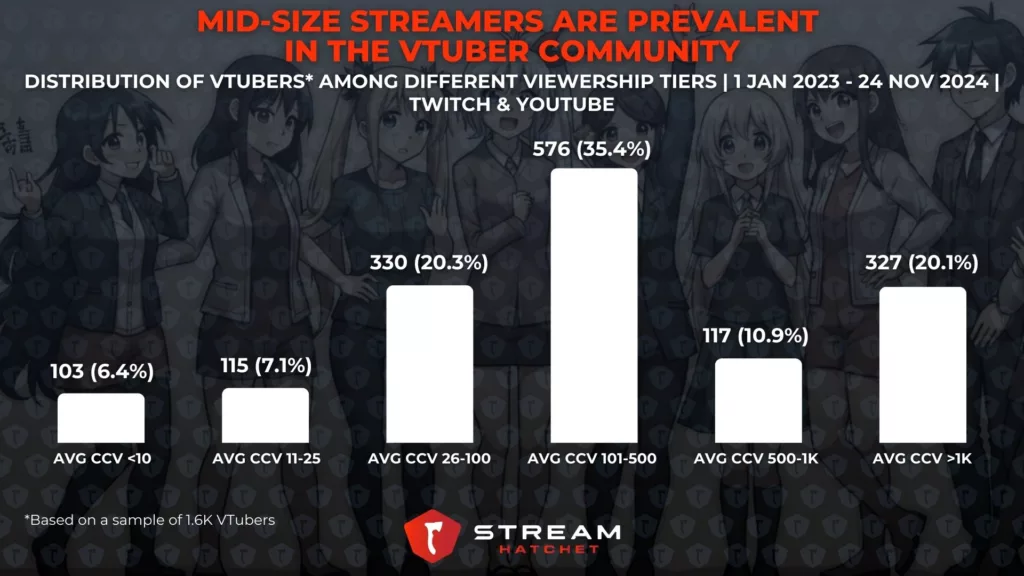
Among VTubers, the distribution of streamers looks wildly different. Across a sample of 1.6K VTubers, the largest group (35.4%) had an average viewership between 101 and 500. This grouping may represent VTubers who have found their desired niche audience and happily create content that suits their desires – albeit without targeting the mega-popular games played by higher average viewership VTubers (covered in more detail here).
What sets this top group of VTubers (20.1%) apart, allowing them to generate an average viewership of more than 1K? The gulf between these two groups may represent agency vs. non-agency VTubers. Of course, agency VTubers receive more financial support, but crucially they also have access to other prominent VTubers to collaborate with. Collaborations are essential for VTuber success, allowing the different personalities to play off of one another. This is just speculation though: There are many other reasons a streamer might have had an exceptionally high average viewership over this period. Take Minato Aqua, for example, who “graduated” (retired her VTuber persona) on the 28th of August and generated an overwhelming peak viewership of 963K – no doubt inflating her average viewership across all streams.
How To Make a VTuber Model
With VTuber models seemingly playing such a large part in a streamer’s chance of success, it’s worth taking a quick examination of how to make a VTuber model. It is possible to create your own AI VTuber entirely from scratch – there are certainly plenty of guides online such as this wikiHow guide. While a full walkthrough is beyond the purview of this article, the primary challenges of creating a model are finding assets and implementing them in tracking software that can map the assets onto your own body.
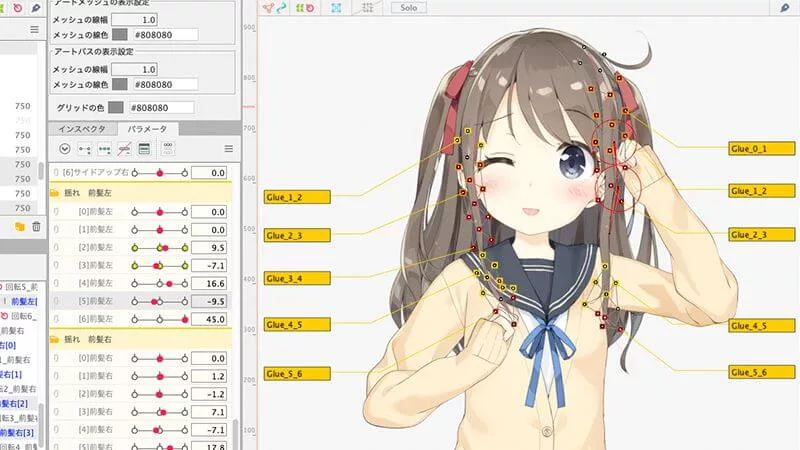
A more realistic option for amateur VTubers is to purchase both the assets and the software online. This option is cheaper, requires less technical know-how, and removes some of the creative burden of designing an entirely new avatar from scratch. Take the Rindo VTuber model for example: A default avatar sold by STUDIO JINGO for roughly $70 USD. Free VTuber models exist too, but are of a much lower quality. The issue is that these VTuber models will inevitably look similar to other people who purchased the same model – not what you want when you’re trying to express your individuality!
This is where custom VTuber modeling comes into play: Redesigning base VTuber models or purchasing assets to dress them up and make them your own. This kind of customization feels similar to character customization in an RPG, bridging the gap between gaming and live streaming. Stream Skins and catboymech are both great examples of online VTuber model asset shops that offer a great amount of variety to budding VTubers. Unique designs can make all the difference when trying to compete with the high-value, fully 3D models of agency VTubers.
For the individual, which VTuber model they pursue will most likely come down to personal preference rather than strategic decision-making. But sponsors looking to partner with mid-tier VTubers might do well to heed to common trends among mega-popular VTubers and their appearances if they hope to reach the largest possible audience. In the future, advancements will hopefully allow for greater experimentation with and accessibility to VTuber model technology.
To keep up to date with the latest VTuber-related insights and trends, follow Stream Hatchet:
